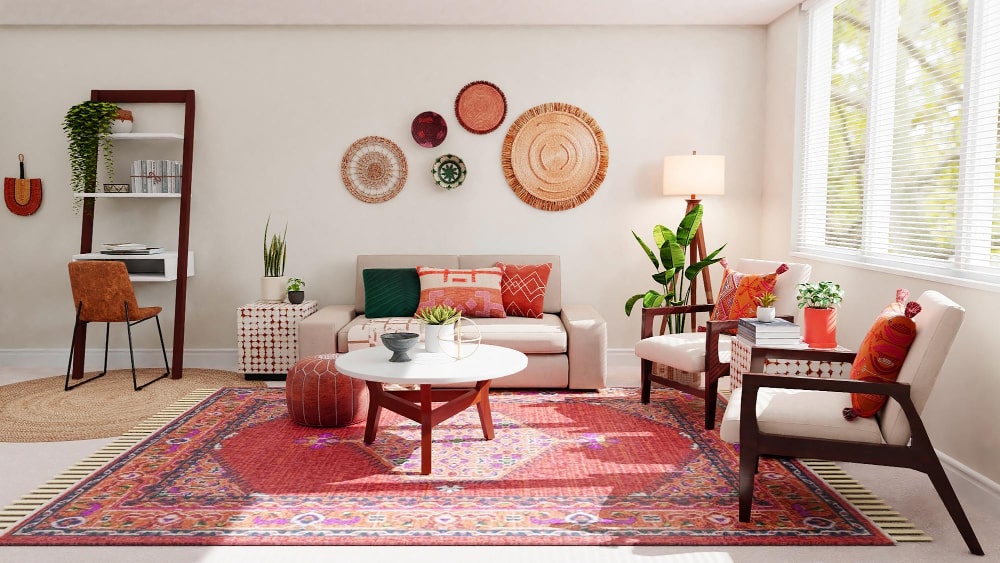A leading Architecture Firm can design your dream space.
A leading Architecture Firm can design your dream space.
Blog Article
Transform Your Home With Vital Concepts of Interior Decoration and Aesthetics
By understanding the influence of shade theory and the importance of structure and patterns, one can produce spaces that are not just aesthetically appealing but additionally deeply individual. Attaining this equilibrium entails even more than plain decor; it includes a tactical arrangement and an eager understanding of how each component connects within a room.
Comprehending Shade Concept
Color concept is a fundamental element of interior decoration that dramatically affects mood, understanding, and overall visual. Comprehending the concepts of color concept allows developers to produce spaces that reverberate emotionally with owners while satisfying useful demands (interior design firms). Shades can be categorized right into three main kinds: main, additional, and tertiary. Each classification plays an important duty in establishing consistency within a room.
The emotional effect of shades is profound; cozy colors such as reds and oranges evoke power and heat, while great tones like blues and eco-friendlies advertise peace and harmony. The usage of corresponding shades boosts aesthetic interest, creating striking contrasts that can elevate a space's charm.
Neutral shades, on the various other hand, function as a versatile backdrop, allowing other design aspects to radiate. It is necessary to consider factors such as lighting and the room's purpose when selecting a color palette, as these can alter the perception of colors throughout the day.
Ultimately, a well-considered shade scheme can change an area, promoting a sense of comfort and style that lines up with the citizens' choices. Proficiency of color theory is, for that reason, a crucial ability for any kind of indoor designer aiming to develop unified and welcoming settings.
Accomplishing Balance in Design
Just how can developers achieve a feeling of balance in their spaces? Accomplishing balance in design is basic to creating unified interiors.
Asymmetrical equilibrium, on the various other hand, counts on differing components that still achieve a natural look. This technique enables more dynamic and casual plans, giving rate of interest while maintaining balance. By very carefully selecting differing dimensions, colors, and appearances, designers can develop a visually engaging room that feels balanced yet energised.
Radial balance stresses a main prime focus with components radiating external. This design is typically seen in round layouts, where furniture and decoration develop a cohesive surround that attracts the eye internal.
Eventually, attaining equilibrium requires thoughtful consideration of scale, proportion, and the connections in between elements. Architecture Firm. By masterfully using these balance principles, designers can change rooms into environments that feel both aesthetically pleasing and functionally harmonious, improving the total experience for owners
Importance of Spatial Awareness

An eager sense of spatial awareness permits developers to identify prime focus within an area, guiding the customer's focus to key features while maintaining an overall sense of unity. It also assists in the tactical placement of illumination, which can substantially affect the assumption of room and state of mind. Recognizing spatial partnerships enables the developer to provide to the certain requirements of residents, making certain that each location serves its intended purpose without endangering appearances.
Inevitably, spatial recognition is crucial for taking full advantage try this website of the potential of any kind of indoor space. By meticulously taking into consideration the interplay in between dimensions, layout, and function, designers can create settings that not only fulfill sensible needs but likewise evoke a sense of convenience and beauty, click reference improving the general living experience.
Integrating Structure and Patterns
Embracing a varied variety of appearances and patterns can significantly improve the visual and responsive appeal of an interior room. The calculated use of numerous materials-- such as timber, metal, textile, and stone-- produces deepness and passion, making a room really feel more welcoming and dynamic. Incorporating smooth surfaces with rough appearances can establish a balance that attracts the eye and engages the senses.
When including patterns, consider both scale and rep. Large patterns can work as centerpieces, while smaller, refined layouts can complement other aspects without frustrating the space. Layering patterns, such as pairing floral paddings with candy striped throws, adds complexity and a feeling of consistency if executed thoughtfully.
It is additionally crucial to keep a natural shade scheme, ensuring that textures and patterns function with each other instead of contend for interest. By selecting a few crucial structures and patterns, you can produce a combined visual that mirrors your individual style while enhancing the overall setting of the area. Inevitably, the careful incorporation of these elements can change a mundane Recommended Reading space right into an advanced setting rich with character and heat.
Customizing Your Space
Creating a room that shows your personality is vital to attaining an absolutely inviting environment. Customization in interior layout permits you to infuse your unique design and interests right into your home, transforming it from a mere sanctuary into a sanctuary that speaks with who you are. Begin by picking a color scheme that resonates with your emotions-- bold tones can energize, while soft tones offer harmony.
Integrate art work and decoration that reflect your enthusiasms, whether it be travel, nature, or abstract principles. Showing individual collections, such as books, pictures, or souvenirs, can stimulate cherished memories and produce focal points within an area. Furthermore, consider personalizing functional pieces, like upholstered furnishings, to align with your visual choices.

Conclusion
In final thought, the transformation of a home with the essential principles of indoor layout and appearance necessitates a detailed understanding of shade concept, equilibrium, spatial awareness, structure, and customization. Each component contributes considerably to producing an unified and useful living setting - miami interior design. By thoughtfully incorporating these principles, individuals can enhance the visual appeal and psychological vibration of their rooms, inevitably promoting a home that reflects special identifications while providing comfort and functionality
Report this page